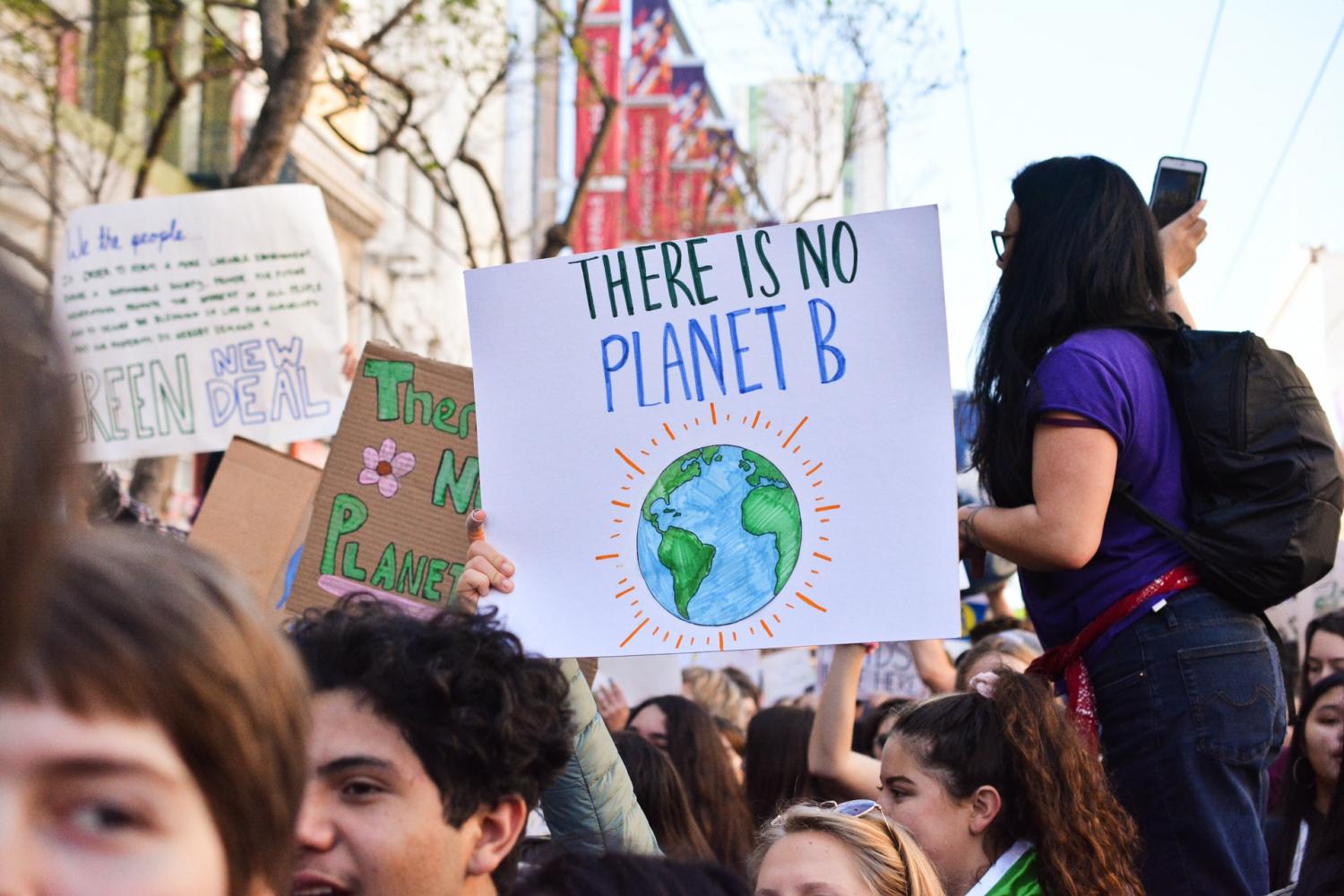Cities Announce Massive Fossil Fuel Divestments


Last week, 12 cities around the world announced a commitment to divest from fossil fuels and advocate for more sustainable investment, looking toward a green and just recovery from COVID-19. With divestment, these cities aim to accelerate the adoption of renewable energy in their communities, as well as globally, as demand shifts.
Four American cities — Los Angeles, New Orleans, New York City and Pittsburgh — have signed the declaration. While Los Angeles and New York might not surprise anyone, New Orleans and Pittsburgh are not likely the first places people think of as being at the forefront of sustainable cities. But a closer look reveals some interesting considerations.
Surprisingly, New Orleans takes steps to divest from fossil fuels
Louisiana is a powerhouse when it comes to fossil fuels, accounting for about 1 percent of total U.S. oil reserves and production. It also claims 9 percent and 7 percent of U.S. gas production and reserves, respectively. About 70 percent of the state’s electricity is generated using natural gas, and per-capita energy consumption is among the top three states in the country, mostly due to the energy-intensive petrochemicals industry as well as the oil and gas sector.
Renewable energy only makes up about 4 percent of the state’s generating power, the vast majority of which comes from biomass and hydropower. The one utility-scale solar farm in the state is located in eastern New Orleans, though there are plans for future facilities.
New Orleans, however, has a particular reason to be concerned. Fifteen years on, the city is not the same as it was before Hurricane Katrina — the costliest storm in U.S. history — caused widespread destruction. Resilience should be at the forefront of virtually every discussion relating to the city’s future, and energy efficiency and renewable energy are cornerstones of a resilient energy path.
In 2017, the city released its Climate Action for a Resilient New Orleans plan, which has a goal to reduce the city’s carbon emissions by 50 percent of 2017 levels by 2030 through initiatives such as 100 percent low-carbon power and 255 megawatts of local solar power by the same year.
In an unexpected twist, Louisiana’s governor announced in February plans to mitigate greenhouse gas emissions as part of a coastal restoration and flood prevention plan, aiming to reach statewide net-zero emissions by 2050. It should be noted, however, that the task force set up to figure out how to reach these goals is required to have at least six representatives from the oil, gas and chemical sector. But all of this forward momentum has set up an interesting dynamic in the state for taking action on climate change, and New Orleans’ commitment to divest from fossil fuels adds another tool to reach those goals.
Home to massive natural gas reserves, Pittsburgh takes on climate action
Pennsylvania is also heavily reliant on fossil fuels for its energy mix, having abundant coal and natural gas reserves. The Marcellus Shale, the largest U.S. natural gas field, lies beneath about three-fifths of the state, and Pittsburgh sits in the part of the state that is traditionally heavy coal country. Unlike Louisiana, however, Pennsylvania produces more electricity than it uses, and the bulk of that comes from natural gas, nuclear and coal. Renewable energy accounts for about 4 percent of the state’s energy mix, the bulk of that from hydropower and wind.
Unlike Louisiana, Pennsylvania has had renewable energy goals on the books for much longer, though they are moderate: The state’s 2004 alternative energy plan requires 18 percent of electricity to be renewable by 2021, with 0.50 percent solar. However, in 2018, the state released plans to increase the deployment of solar. Further, the state released a Climate Action Plan in 2018 that requires an 80 percent reduction in emissions by 2050.
As a city, Pittsburgh has been pushing the envelope on climate action. It joined the Bloomberg Climate Challenge and developed an ambitious climate action plan with a goal toward reducing emissions by 50 percent of 2003 levels by 2030, including powering city buildings with 100 percent renewable energy.

Refusing to let their future be dictated by the past and present
Divesting from fossil fuels is a clear indication of the desire to reduce dependence on oil and natural gas and to open more opportunities for investment in renewable energy — from direct investment capital in stocks, bonds or funds, to ownership of facilities and processes. Cities in particular are at the forefront of dealing with the effects of climate change and must make decisions to ensure the sustainability and resilience of their buildings and communities.
City leaders may make decisions based on the facts on the ground, but they must also consider issues like job growth and economic development, both of which renewable energy can offer. Cities like New Orleans and Pittsburgh show they are proactive as they make investment decisions for their futures. Their past and present may be in fossil fuels, but the future in both cities will be built on renewables.
Despite Skeptics, Sustainable Investing Holds Firm for Green COVID-19 Recovery


In past years, sustainable investing strategies have tempted investors with the promise of doing something good for the world, rather than gaining direct financial reward. Now the global COVID-19 crisis has put sustainable funds to the acid test, and some leading analysts see strong signs that the financial merits of sustainable investing are holding true, despite red flags raised by skeptics.
A ringing bottom line endorsement for sustainable funds
Several analysts began to see signs of strength in sustainability investing quite early in the COVID-19 crisis. Despite the COVID-19 storm gathering overseas in January, first-quarter 2020 flows in the U.S. set a new record of $10.5 billion in positive territory for sustainable investing, far outpacing the same quarter last year.
As global markets spiraled downhill in March, Morgan Stanley and other analysts took note that funds using environmental, social and governance (ESG) screens suffered less damage than conventional funds. More recently, on September 17, Morgan Stanley followed up with a new report that comes down firmly on the side of sustainable funds and their performance.
The firm’s analysis of U.S. equity and bond funds from January to June 2020 reached the strong conclusion that “sustainable investing does not require a financial trade-off.” During this period of global economic meltdown, Morgan Stanley found that taxable sustainable bond funds “outperformed their traditional peers by a median of 2.3 percent.” Sustainable equity funds fared even better, hitting a mark of 3.9 percent over conventional funds.
On September 21, the firm also issued a new sustainability commitment of its own: to achieve net-zero financed emissions by 2050. In announcing the commitment, the firm stated that it “joins many of its clients in this strategic goal and is committed to providing financing, expertise and thought leadership to support the transition to a low-carbon world.” Morgan Stanley plans to focus on standardization and methodology for carbon reporting in order to achieve its 2050 goal while also assisting its clients.
Red flag No. 1: U.S. investors are lagging far behind their European counterparts on sustainable investing
Another perspective on sustainability investment comes in a new report by Morningstar. Like Morgan Stanley, Morningstar took note of the ability of sustainable funds to weather the downturn sparked by the COVID-19 crisis.
Morningstar looked at second-quarter results for 2020 and noted that global inflows into sustainable funds rose by 72 percent in the second quarter to reach $71.1 billion. That brought the total to a record of almost $1.1 trillion by the end of June. The firm credits that performance to the second-quarter stock market recovery combined with “growing investor interest in environmental, social, and governance issues.”
Unfortunately, investor interest in the U.S. has been running far behind the activity within the E.U. “Europe continued to dominate the space, garnering 86 percent of the global inflows, while the United States took in 14.6 percent,” Morningstar analysts noted.
With a leadership gap like that, it is small consolation that many other parts of the world are falling even farther behind the Morningstar analysis.
How U.S. investors can pick up the pace on COVID-19 recovery
Part of the problem with the slower growth of sustainable investing in the U.S. may be traced to uncertainty over federal climate policy. While the European Union has shown strong signs of rallying around a green COVID-19 recovery, Republican policymakers in the White House and the U.S. Senate have blocked proposals to unite the nation — and its investors — in a similar endeavor.
Nevertheless, Morningstar did take note of one powerful trend that could attract more investors to U.S. sustainability funds. Over the past three years, hundreds of conventional funds in Europe have been rebranded as sustainable to reflect new sustainability commitments or upgrades to existing sustainable investing strategies.
In a parallel trend, asset managers are beginning to rebrand their products, too.
Red flag No. 2: What’s really behind the relative strength of sustainable funds?
As with sustainable funds rebranding, the asset manager trend is also much stronger in Europe than in the U.S. However, if interest in sustainable investing continues to grow, rebranding could help reassure U.S. investors that sustainable funds are firmly grounded in long-term, bottom-line principles that have succeeded for many years under different names.
However, with skeptics continuing to raise questions about the performance of sustainable funds, the lack of a supportive federal framework could continue to tamp down investor demand in the U.S.
In August, for example, economists based at the New York University Stern School of Business published a study that questioned the data behind ESG fund performance during the COVID-19 crisis. They proposed that other factors could explain the relative strength of sustainable funds.
“Industry affiliation, market-based measures of risk, and accounting-based variables that capture the firm’s financial flexibility (liquidity and leverage) and their investments in internally-developed intangible assets together dominate the explanatory power of the COVID returns models,” they explained.
On the other hand, the research team based its study on a comparison with data from the global financial crisis of 2008-2009. That was barely more than 10 years ago, but in that short period of time, the fields of renewable energy, energy storage, electric mobility and other sustainability systems have skyrocketed from R&D backwaters to mainstream commercialization.
Without fully accounting for the technology transformation, comparing 2020 to the economic crisis of 10 years ago does not appear to offer particularly strong support for the skeptics’ case. Instead, the comparison serves to demonstrate what could have happened to sustainable funding without a decade of innovation and investors’ support.
U.S. business leaders push for more sustainable investing
As a further demonstration of investor support for new technology — and in the absence of a strong federal policy supporting sustainable investing during the Donald Trump administration — hundreds of U.S. business leaders have united to draw attention to the prospects for profit under decarbonization.
One breakthrough moment for private sector sustainability leadership occurred in May, when the U.S.-based We Mean Business coalition of 155 global corporations joined the U.N. Global Compact in support of the Science-Based Targets Initiative.
Last week, We Mean Business took stock of recent major developments in corporate sustainability, including new commitments from Best Buy, McKinstry [note: not to be confused with McKinsey], Real Betis, Schneider Electric, and Siemens in support of The Climate Pledge initiative for net zero by 2040, co-founded by Amazon and Global Optimism.
Another leading U.S.-based group, America’s Climate Pledge, also released a new sustainability progress report, arguing the U.S. has already reached a renewable energy “tipping point,” thanks in part to corporate leadership.
The report notes that this “bottom-up” leadership on climate action has been a key factor driving U.S. progress on decarbonization even after President Trump started the process of pulling the U.S. out of the Paris Agreement on climate change.
However, the report also argues that supportive federal policy will be a necessary element to accelerate change.
U.S. voters have the power to remove federal policy obstacles this year. Early voting has already begun in advance of the November 3 election cycle, and the result will determine who holds the office of the U.S. president, along with several key Senate seats.
With the impacts of climate change already in full evidence, millions of U.S. investors, large and small, will also have an opportunity to exercise their voice at the ballot box and demonstrate their support for sustainability funds through the levers of the democratic process.
Image credit: Li-an Lim/Unsplash
All the Big News From Climate Week In One Place


(Image: Iconic buildings across New York City, including the Empire State Building and Brooklyn's Weylin events center (pictured here), were illuminated in green to mark the kickoff of Climate Week.)
With in-person events still on hold due to the coronavirus, Climate Week NYC events moved online last week, making tougher to track the big news. Afraid you may have missed something? We've got you covered. As we mark another Climate Week come and gone, read on to catch up on the biggest, boldest announcements from businesses, investors and policymakers worldwide.
Corporate commitments roll in as Climate Week kicks off
Companies often leverage Climate Week to promote the launch of their new goals, targets and trajectories — and this year was no exception. Among this year's announcements: Walmart says it will target net-zero emissions by 2040 without relying on carbon offsets, and PepsiCo, Intel, Asics, Velux Group, Sanofi and SKF are eyeing 100 percent renewable energy.
Meanwhile, Microsoft pledged to become water positive, and General Mills is targeting a 50 percent reduction in food waste, both by 2030. Morgan Stanley also committed to reach net-zero financed emissions by 2050, making it the first major Wall Street bank to commit to transition its capital away from industries and activities that produce greenhouse gas emissions. And HP linked up with the Arbor Day Foundation to plant 1 million trees by end of this year, with a focus on areas that have suffered from wildfires or experienced major deforestation — including California, Brazil, Indonesia and Ireland.
New guide raises the bar for short-term climate action
As unprecedented wildfires ravage the U.S. West Coast, experts predict a particularly devastating Atlantic hurricane season, and flooding wreaks havoc from the U.K. to Bangladesh, it's clear the impacts of climate change are already with us. Along with long-term targets, it's vital that companies take measurable steps to move the needle on climate change today.
With this in mind, the We Mean Business coalition, a climate action collaborative including more than 1,300 companies with a market capitalization of nearly $25 trillion, launched a new guide for credible corporate climate leadership in the 2020s — including guidelines for progress measurement and disclosure, supply chain engagement, and policy advocacy.
"Business only has a short window of time left to prepare for the zero-carbon future so now is the time to step up," We Mean Business CEO Maria Mendiluce said in a statement. "We are seeing companies from even the most challenging sectors taking climate action and reaping the rewards. We now need to see this new level of leadership from business across the board — increasing its level of ambition, action and advocacy to drive us forward at the pace needed.”
National and state governments roll out bold action plans to tackle climate change
Much of the big Climate Week news this year came from national and sub-national governments. Among the standouts: China pledged to reach peak emissions by 2030 and achieve carbon neutrality by 2060. To the west, South Korea unveiled its Green New Deal proposal, which includes a pledge to achieve net-zero carbon emissions by 2050.
At the sub-national level, the mayors of 12 global cities home to 36 million residents — including New York, Los Angeles, London, Berlin and Milan — pledged to divest their assets from fossil fuels and increase investments in climate solutions. California Gov. Gavin Newsom issued an executive order that will essentially ban the sale of new gasoline-powered passenger vehicles by 2035, a first for any U.S. state. And Michigan Gov. Gretchen Whitmer laid out the most ambitious climate action commitment in the U.S. Midwest to date, including plans to make the state carbon-neutral by 2050.
CPG companies team up to tackle deforestation
Seventeen multinational consumer goods giants worth a collective $1.8 trillion came together in a new corporate coalition dedicated to reducing deforestation, forest degradation and land conversion in supply chains. Unilever, Danone, General Mills and Mars are among the founding members in the new Forest Positive Coalition of Action, launched during Climate Week under the umbrella of the Consumer Goods Forum.
“In the wake of the COVID-19 crisis, we must ensure that efforts to protect forests are part of the global response," Mars CEO Grant Reid, co-sponsor of the coalition, said in a statement. "This response requires all actors with an interest in ending deforestation and who are committed to being part of the solution to come together."
New net-zero scheme to target supply chain emissions
This new corporate coalition requires members to halve their supply chain emissions by 2030, reach net-zero by 2050 and report annually on their progress. Members will also make climate targets a key supplier purchasing criteria within one year.
While the coalition only includes a handful of companies as of now — Ikea, Unilever, Ericsson, BT Group and Telia — the aim is to inspire others to extend their emissions-reduction efforts beyond their own operations and into their supply chains.
"Over two-thirds of our end-to-end carbon emissions come from our supply chain," Andy Wales, chief digital impact and sustainability officer for British telecom company BT Group, said in a statement, illustrating the impact of large corporate supply chains. "By working together, we'll be able to curb emissions and help pave the way for others to follow."
New SME Climate Hub to help small- and medium-sized businesses cut carbon emissions
Launched by the International Chamber of Commerce, the Exponential Roadmap Initiative, the We Mean Business coalition and the UNFCCC Race to Zero campaign, the SME Climate Hub calls on small- and medium-sized business (SMEs) with less than 500 employees to halve emissions by 2030 and go net-zero by 2050, while providing resources to help them do it.
Investor coalition calls on high-emitting businesses to go net-zero
As of this year, more than 1,500 businesses have net-zero targets of some kind on the books, compared to around 500 in December 2019. But that still isn't nearly enough, says Climate Action 100+, an investor initiative launched in 2017 to ensure the world’s largest corporate greenhouse gas emitters take necessary action on climate change.
During Climate Week, the group penned a letter to 161 CEOs and board chairs, including those heading the 100 most “systemically important emitters,” responsible for two-thirds of annual global industrial emissions. The letter calls on these companies to "set an ambition to achieve net-zero emissions by 2050 or sooner across all material GHG emissions."
"Companies across all sectors need to take more ambitious action to ensure otherwise devastating impacts of climate change are avoided while they still can be,” said Stephanie Pfeifer, CEO of the Institutional Investors Group on Climate Change and a Climate Action 100+ Steering Committee member, in a statement. “Supported by investor engagement, we’re seeing encouraging commitments and ‘net-zero leaders’ beginning to emerge, but a broader step change is urgently required if global warming is to be limited to 1.5 degrees Celsius."
Image credit: Sebastian Melendez/The Climate Group
Grow with Purpose: Inspiring Others to Create Change


We’re living in a world where so much has changed in such a short space of time. The ongoing pandemic has forced us all to face the fragility of our world and to reflect on the intrinsic connection between our health and the health of our planet. This time has also pushed many companies to take a hard look at their purpose.
For me, this year has seen several milestones for Evian as we adopt an ever more sustainable model, aiming to become a fully circular brand by 2025, as well as achieving carbon neutrality in April.
We are acting now, however these changes did not happen overnight and - just like every business - we must continue to reflect on our purpose, and how to reconcile growth with a clean and healthy planet.
There are a lot of theories out there about how to make brands grow. I believe one of the best is simple, but not easy to implement: put the purpose of your brand upfront in everything you do. This theory is about brands departing from “pledgeland” and instead showing action. The planet will not wait for us.
Brands on a Mission, a recent book by Myriam Sibide, senior fellow at the Harvard Kennedy School, explores exactly that. It shows us several examples of how brands can not only create impactful social missions that improve public health and safety but can accomplish this while driving profitability and growth. With their often-vast reach and resources, brands can act as trendsetters, aligning their products and marketing to inspire positive action.
Myriam discusses in her book, for example, how an equipment company improved poor sanitation in India, Bangladesh, and Tanzania; how a toothpaste brand helped address school absenteeism and even how a beer brand is tackling domestic violence.
We recently worked with Myriam to research how we can inspire people to recycle plastic bottles, particularly through the positive impact that our 2019 #FlipItForGood campaign had on recycling behavior change. In her study of 1,200 participants, Sidibe proved that the challenge triggered a recycling mindset and increased recycling behavior – calculating that it increased water bottle recycling by 56 percent and paper recycling by 47 percent over the campaign period.
For us, this campaign is a clear example demonstrating how brands can look to leverage their platforms to motivate consumer behavior change around plastic waste; highlighting how one simple action of putting a bottle in the right bin can have a great impact when done collectively.
Of course, right now, we know that the COVID-19 pandemic is posing a threat. It has become increasingly challenging to deliver our commitments as the pandemic continues, and consumers have noted that.
Commitments to achieving sustainability should be more than just pledges. They must be an intrinsic part of any business strategy and, most importantly, a brand’s values. My take is that businesses must have big and ambitious goals on sustainability but should not let the fear of starting small paralyze them. What is important is starting somewhere, even if these actions look small in the beginning. In the long run, the seeds will grow and make a difference.
Image credit: Djib Djib/Unsplash
The New GRI Definition of Materiality: Forward or Backward?


GRI recently issued an exposure draft for the revision of the universal standards GRI 101, 102 and 103, with comments ending by September 9. They include significant and extensive changes, but we will only discuss the new definition of materiality, and, by implication, that of stakeholders.
As in previous versions of the standards the issue of material topics is the guiding basis for sustainability reporting, so the definition will have a noticeable impact, not only on what gets reported, but by implication, on what gets done, on how firms manage their impacts on all stakeholders, and how the firm itself uses the report.
A comparison of the evolving guidelines
GRI 103 of 2016: Material topic: topic that reflects a reporting organization’s significant economic, environmental, and social impacts; or that substantively influences the assessments and decisions of stakeholders.
Proposed GRI 103 of 2020: Material topics are topics that reflect the organization’s most significant impacts on the economy, environment, and people, including impacts on human rights.
The significant change is the elimination of the sentence “or that substantively influences the assessments and decisions of stakeholders.”
The new definition differs from the current (2020) one by being of a one-way impact. The current one asks for reporting on social and environmental impacts of the actions OF the firm on stakeholders and the impacts of their reactions ON the firm activities – as in a two-way impact. The proposed definition only asks for reporting on the first set of impacts. The concern is the effect on stakeholders. In this new definition there is implicit a new definition of stakeholders, i.e. those that are impacted by the activities of the firm, in contrast with the previous definition of those that are impacted AND have an impact the activities of the firm.
A challenge to materiality
From the point of view of reporting what is of interest to stakeholders, i.e. those affected, the new definition seems proper enough. Report all your impacts regardless of the reactions of those stakeholders to those impacts. In the previous definition, the firm would also consider those reactions, which led the graphical representation of the materiality matrix. In the new definition the materiality matrix ceases to be relevant.
Can firms ignore the reaction of stakeholders? Of course not, it is a major component of the sustainability strategy of the firm. The firm will need to prioritize, given scarce resources, and within the prioritization will need to consider the magnitude, frequency, as well as the financial and reputational impact of stakeholder´s reactions. The proposed GRI standards are driven by the informational needs of some stakeholders, not what is material to the firm. With the new definition, GRI is driving a wedge between the information needs of stakeholders and the needs of firms to develop their corresponding sustainability strategy, and diminishes the relevance of the reports and widens the gap between what must be reported and what is material to the firm .
Presumably, the new definition wants to avoid overlapping with the Sustainability Accounting Standards Board, SASB, standards that are mainly concerned with financial impacts ON the firm, i.e. stakeholder´s reactions. But this does not serve firms well. And it is not complete. SASB offers a set of indicators that are selected on the basis on the potential impact on the financial condition of the firm, if the markets for virtue – as in investors, lenders, employees, and other stakeholders - react. But the indicators do not reflect impact, only the potential source of an impact.
According to SASB, the indicators have been selected on the assumption, through experts’ opinions, of the impact potential and assume the likelihood of reaction, but still ignore context, power, and willingness to act. In an effort to standardize indicators, that apply to many cases, they are very general, even though they have been specified at an industry level. But, for instance, every energy firm is different, so the same value of the indicator for emissions, could elicit very different reactions from those that can have an impact on the firm. More granularity is needed in the indicators, depending on context.
What is needed is the assessment by the company of the reaction of the material stakeholders and that can only be done by the firm itself. And the new definition of the GRI standards, move away from it, and the SASB ones, even though in a potential financial impact context, they cannot assess impact. These indicators contain information on what to react to, but not on how and how much to react, on an average firm.
Where the GRI revisions take us
Neither is enough to guide strategic sustainability management, but the revision by GRI now forces the firms to produce a report that does not serve their needs well, only those of some stakeholders.
And the proposed definition moves it in opposite directions of the proposal by the European Commission, EC, which three days before issued the Consultation Document Review of the Non-Financial Reporting Directive, where its states: “This means companies should disclose not only how sustainability issues may affect the company, but also how the company affects society and the environment. This is the so-called double materiality perspective.” (emphasis added).
As GRI seems concerned only about the informational needs of stakeholders, for whom it is an end, not a mean, they are seen as passive agents. But management must consider the reaction of stakeholders, particularly stockholders that may affect the firm´s cost of capital and, in some cases (through approved resolutions), on the decisions on Board. and their impact on the firm activities to design this sustainability strategy and the corresponding actions.
This does not mean that all reporting frameworks should be revised to converge, different users have different needs, different firms have different strategies, but is does mean that users must be aware of the target population and that sustainability materiality is firm, context and time specific.
But the new GRI definition restricts the relevance of the reports and its usefulness to management that will need to consider, separately, the potential reactions OF stakeholders, not only their impact ON them, with the help of SASB indicators and their own assessments of material issues.
Image credit: Unsplash
Worldwide, 40% of Asset Managers ‘Still Not Engaging’ on Climate Change


Despite climate change having risen up high on the global agenda before and since the 2015 Paris Agreement resulted with a plan to mitigate greenhouse gas emissions, a new study of asset managers globally collectively managing in excess of $10 trillion of assets under management (AUM) has found that well over a third of respondents were unable to provide an example of a climate change-related engagement efforts.
This came despite just under two-thirds of the sample of managers surveyed having an environmental social governance (ESG) engagement policy in place, according to United Kingdom-based investment consultant Redington’s research team.
Moreover, while three quarters of the survey respondents indicated that they consider risks and opportunities related to climate change, this latest analysis finds that only 60 percent can actually provide an example of when these factors have actually influenced buying or selling decisions. As such, greater attention to climate change engagement would seem to be clearly needed.
Nick Samuels, head of manager research at Redington, which has offices in London, Bristol and a presence in China, noted that “the discrepancy highlights a significant industry issue” that, despite engagement seemingly increasing, it has not yet fully translated into concrete and consistent portfolio decisions.
Commenting in the wake of the findings, Samuels, who previously worked at Schroders on the Asia and Emerging Market equity teams and for U.S. multi-manager SEI Investments, said: “Climate change is a widespread and global problem, impacting all sectors of the economy in one way or another. We would expect all our managers, regardless of asset class, to have at least one, if not several, examples of climate change related engagements with their portfolio companies.”
He added: “Managers who thoroughly analyze – and take action on – risks are crucial to driving progress so, moving forward, we strongly hope to see this number increasing.”
The firm interviewed a total of 104 managers from across the globe including in the U.S. (conducted anonymously), representing over $10 trillion in combined AUM, on a vast spectrum of areas relating to ESG.
With global momentum around climate change quickly rising, Redington asserted that all players in the global economy – including investors, asset managers and investment consultants – “must be prepared to play their part in the U.K.’s transition to a low carbon economy.”
“While the positive momentum is clear, we simply have to raise the bar on climate change,” Samuels stressed adding that: “Investors have the power to push for real action from policy makers and businesses to address a whole range of issues that fall under the banner of ESG.”
As for the global financial sector, the Redington research head underlined the message that it has “a responsibility” to ensure they have the tools and knowledge to properly address the climate related risks that arise in their portfolios.
There also needed to be a fundamental shift in conversations to “push companies for better transparency on their environmental footprint,” the firm contended, which will allow for better quality carbon data and access to potentially relevant climate change and other environmental metrics.
Elsewhere, Redington’s research highlighted that only 28 percent of asset managers surveyed were currently reporting against the Task Force on Climate-related Disclosures (TCFD) guidelines.
However, the firm does expect to see “significant improvement” in the coming months, with half of the managers surveyed currently considering adoption of the TCFD guidelines in their reporting procedures.
Samuels further explained: “As a research team, when we are evaluating a manager's ESG performance, we assess three key dimensions; the depth and impact of the manager's engagement, the integration of ESG factors in the investment process and philosophy, and the manager's reporting capabilities of non-financial metrics. Through this in-depth due diligence, we are looking to identify those managers who are best suited to offer transition-ready portfolios.”
Nevertheless, he pointed out that the need for education and action is not limited to the asset management community.
“While we [Redington] are committed to challenging managers on the quality of their climate change risk management, tackling these issues is a key priority for all of us,” Samuels posited. “And, as an industry, we must look to continually grow and deepen our expertise on these matters. The pivotal role financial institutions have to play in shaping the world of tomorrow cannot be underestimated, and we must embrace the responsibility that comes with it.”
Image credit: Garrett Sears/Unsplash
Indoor Farms Are Reimagining America’s Food Supply


With the worldwide population surging and acreage for agriculture shrinking, indoor, indoor farms are literally on their way up as a viable form of food production.
Bowery Farming, founded in 2015, is growing lettuce and other greens in vertical, indoor farms located just outside of cities. The “farms” are able to produce crops year-round; and Bowery says it is using far fewer resources than traditional farms and generate less waste.
“Farming is very resource intensive,” noted Katie Seawell, Bowery’s chief marketing officer. “We’re transforming non-arable spaces into arable farmlands. We stack crops from floor-to-ceiling; because they are grown indoors, we can control the environment. We focus on seeds many farmers are unable to grow because of conditions. We start with seeds and then are able to optimize the plants and are able to harvest at their peak and get them in stores quickly. We are the grower, packager and shipper all in one.”
The stacked plants are monitored and fed using the Bowery OS, a proprietary operating system that gathers information as the plants grow and then creates a “recipe” for each one. “We continue to learn what makes them flourish and thrive,” Seawell explained. “The next time we plant, the recipe has been optimized.” Bowery’s crops are pesticide-free, and the company uses less water than traditional growers.
Currently Bowery Farming is growing different grades of lettuce and herbs as they grow efficiently. The company, however, plans to expand beyond leafy greens, according to Seawell.
Bowery now has three indoor farms, all near urban areas where fresh produce can be in short supply. One is a research and development center in Kearny, NJ, a suburb of Newark. A large-scale commercial farm also is in Kearny and another farm is in White Marsh, Maryland, just north of Baltimore. “We want to scale globally, and grow our national footprint,” she added. “We’re concentrating on urban centers and feel we can deliver.”
The company says it is collaborating with nonprofits in nearby communities. In the New Jersey and New York areas, Bowery works with Table to Table and Teens for Food Justice. In Maryland and the Washington, D.C. area, Bowery offers support to Maryland Food Bank and DC Central Kitchen. Through DC Central Kitchen’s Healthy Corners program, fresh produce is sold to corner stores in D.C.’s low-income neighborhoods at wholesale costs, where it is then sold to consumers at below-market prices.
While other farms have been struggling during the coronavirus pandemic, Bowery was able to grow its customer base, Seawell noted. “We were very fortunate; we were deemed an essential operation, so there was no disruption in our business. In fact, we had an acceleration in demand because of shortages in other parts of the supply chain.” In early January, the company’s produce was in about 100 stores; now the indoor farms are supplying 600 stores, including Giant, Weiss and Walmart, and has grown its online business. “We have doubled our e-commerce traffic since January,” noted Seawell. “People are turning to e-commerce because of supply chain disruptions and we have a stable harvest and get produce on the shelf in a few days.”·
The company is fulfilling the vision of its founder, Irving Fain, who believed that since agriculture is at the center of many global issues, including food access and security, it was time for formative transformation of the industry using technology. As Seawell explained, “Agriculture is at the epicenter of so many global challenges we have. We’re trying to do good through technology.”
When the economy begins recovering in earnest after the pandemic, Bowery Farming can be a part of rethinking a food supply chain that often falters at various stages. “There is a real desire to strengthen our food system, which will benefit retailers and consumers,” according to Seawell. “We can increase access to fresh, delicious, safe produce 365 days a year. We can play an important role in sustainability and farming and can play a part as we strengthen and rebuild from the pandemic.”
Image credit: Bowery Farming
Walmart Extends a Hand Up to Indian Farmers


The Walmart Foundation recently announced it will award two grants totaling $4.5 million to the NGOs Tanager and Professional Assistance for Development Action (PRADAN) in order to improve the livelihoods of Indian farmers. These grants are a part of a $25 million commitment the foundation made in September 2018 to support smallholder Indian farmers over the course of five years.
A commitment to the supply chain from Walmart
The announcement comes as Climate Week 2020 is well underway – and as Walmart announced its own long-term objective to reach zero emissions by 2040. This initiative also is launching at a time when more organizations are focusing on the global pandemic's impact on farmers worldwide.
Among the voices heard during this year’s Climate Week, some advocates are demanding an increase in climate philanthropy to support smallholder farmers, who currently feed 75 percent of the Global South. These same proponents of climate philanthropy point out that less than 2 percent of philanthropic contributions support environmental groups or causes, with a small fraction of that funding supporting women-led environmental action.
The Walmart Foundation grants will enable Tanager, an international agriculture nonprofit, and PRADAN, a Delhi-based community development organization, to focus their efforts on supporting farmer producer organizations (FPOs) to attract new members and scale their knowledge of sustainable farming and business practices, specifically for women farmers.
"The Walmart Foundation and PRADAN share a vision of building sustainable communities by creating opportunities for marginalized people. FPO’s are key to the Foundation’s strategy for empowering farmers and bringing them into the digital era,” said Narendranath Damodaran, executive director of PRADAN.
Harnessing technology to improve livelihoods
The announcement of these two new grants boosts Walmart Foundation investments to $15 million, distributed across eight Indian nonprofits since the program began in 2018. To date, such programs have supported more than 140,000 farmers total, the majority of whom are women.
In 2019, Rubi Devi, a mint farmer living from Uttar Pradesh, joined an FPO run by TechnoServe, a nonprofit supported by a Walmart Foundation grant. Until that time, Rubi’s farming income was unpredictable and subject to the whims of the middlemen she was forced to negotiate with in order to gain access to the market. After joining the FPO, she started to receive regular information on market prices through text messages and in-person meetings.
“Being associated with my FPO and the TechnoServe program has helped me become more independent,” Rubi said. “By selling through the FPO, I receive a better price for every kilogram of mentha oil, and my oil is weighed using an accurate electronic scale to prevent unexpected losses.”
Like TechnoServe, both new grantee organizations will focus their efforts on supporting female farmers via FPOs. Participating farmers gain access to finance and new markets and learn new and sustainable farming practices that improve yield and access new technologies, and generally adapt to an uncertain and unpredictable climate and economy.
In India, women farmers are particularly vulnerable
According to the United Nations Food and Agriculture Organization (FAO), agriculture is among the more common livelihoods for Indians today, with more than 70 percent of rural households making a living from the land. This type of work has become increasingly dominated by women due to ongoing rural to urban migration of men, the growing number of female-run households, and increased production of cash crops.
The COVID-19 pandemic has disproportionately has an impact on India, with cases on track to surpass the United States total in coming weeks after reporting the highest daily count of infections, 98,000 in one day, last week. While the effects of the pandemic can be felt across the subcontinent, there are growing consequences for female farmers, who are often denied ownership of the land on which they farm and earn less for their labor compared to men.
Further, women farmers increasingly find themselves juggling maintaining domestic responsibilities and earning a living farming amidst the uncertainty of COVID-19, which has exacerbated food shortages, limited earning potential and caused much higher levels of emotional distress.
The pandemic also comes at the heels of a disturbing trend of farmer suicides across India, which has one of the highest rates of suicide globally - with more than 10,000 farmers and farm laborers dying of suicide in 2019. In India, farmer suicides are often attributed to fears and misery over bankruptcy and debt.
For example, critics say many farmers found themselves forced to purchase expensive “terminator” GMO seeds from companies like Monsanto (which Bayer acquired in 2018). Although additional research suggests the causes of this high rate of suicide are far more complex than the use of GMO seeds and actually date back over the past several decades, this public health crisis hasn’t gone away. In fact, the COVID-19 pandemic has exacerbated the threats of suicide as many farmers have found their livelihoods threatened during the nationwide lockdown.
Since India continued its shift from a system rooted in permaculture and organic agriculture to one that is increasingly based on monoculture, critics of such practice say conditions for farmers have worsened, environmental risks have increased – even while crop yields and profits for multinationals have grown.
Beyond grants, technology can also help boost farmers' incomes
Through FPOs, Tanager and PRADAN have been able to provide critical support to rural communities in order to mitigate some of these effects. Trainings on sustainable and efficient farming and business practices for women farmers have shifted to digital platforms while the organizations have also responded to immediate needs such as food and hygiene supplies during India’s lockdown.
This Walmart Foundation program – which funds similar initiatives in regions such as Latin America - represents an important evolution in the way corporations are interacting with smallholder farmers: one that is less extractive and instead, a focus on supporting the development of small-scale, sustainable farming practices through grants to local organizations.
In the future, watch for companies to evolve further away from extractive models and work to ensure living wages and safe working conditions for all farmers and laborers along their supply chains.
Image credit: Walmart Foundation
The Race to Establish ESG Reporting Standards Must Be a Race to the Top


The quest to achieve a single set of widely accepted standardized indicators for companies to report their environmental, social and governance (ESG) performance has reached a new stage this week, with the publication of final “common metrics for stakeholder capitalism” by the World Economic Forum (WEF).
Coming only days after the “statement of intent” towards greater collaboration from the world’s five largest sustainability and integrated reporting frameworks and of the separate creation of a European task force to define its own ESG reporting standards, the momentum towards standardization of sustainability or non-financial reporting is building fast.
For those not following these debates in great detail, you will appreciate the irony that a process designed to combat the proliferation, fragmentation and confusion of different sustainability reporting frameworks, is itself fragmented and diffuse.
For those mired in these debates over several years, there is the temptation to say the new metrics simply add ‘just another framework’ to the now 200 which the World Business Council on Sustainable Development has catalogued - with already some 2,000 different ESG indicators.
Company buy-in is crucial
However, it is pressure from companies themselves and from investors, which is both behind this new momentum for standardization and which appears to have set in train an unstoppable race to ensure it reaches a conclusion.
The WEF International Business Council initiative, first announced at Davos in January and whose revision following consultation was unveiled on Tuesday, has the merit of speed, of the Forum’s enviable reputation and of the active support of the world’s “Big 4” accountancy companies in the background.
The combination of compulsory and optional metrics is largely drawn from the methodologies of the existing ESG reporting frameworks and will be implemented immediately by 140 of the world’s largest companies, comprising the Council’s membership.
It is here now.
However, the process so far lacks the independence which has been necessary for standard-setting initiatives in other spheres to gain legitimacy. There is also a question mark over whether reporting which is aimed at measuring value to wider stakeholders, can be properly achieved without fair representation of stakeholders in establishing it.
It also worries me that many touchstone issues are included in the “extended” metrics which means they may easily be excluded from comparable and consistent reporting. These include political lobbying, science-based targets, resource circularity, freedom of association, the living wage, social value and business and human rights issues.
However, this week’s launch committed to further “tweaking” the metrics based on practice, and argued business buy-in is an important component in seeking universal acceptance.
Making connections to strengthen ESG reporting
Meanwhile, the statement of intent from the family of existing voluntary frameworks - GRI, SASB, CDP, CDSB and IIRC - is genuinely innovative in laying out a vision for a comprehensive reporting system, which connects financial and non-financial reporting.
It reflects the shift in the accountancy profession in the last year towards the aim of “connected reporting,” where integrated reporting is not the ultimate aim in itself, but the new conceptual framework which would link existing financial reporting standards to the creation of a proposed new independent non-financial reporting standards board.
The question remains open as to how closely this is linked to the International Accounting Standards Board, responsible for much of the world’s financial reporting? The decision of its own trustees - the IFRS Trustees - to move towards their own consultation on non-financial reporting, something which would have been impossible only three years ago, is a sure sign that the tectonic plates are shifting.
Central Banks, prudential regulators, stock exchanges and securities commissions are all traditional financial actors, who are now fully engaged in these debates.
They are all pursuing systems solutions, important at a time when what we are seeking is system change.
Simplification is a must
However, for report preparers in companies who may be less interested in what this grand architecture looks like, but to what it will mean to them, it does hold out hope that the much-demanded simplification is on its way.
The statement of intent commits to a single set of sustainability topics and disclosure requirements, with the existing frameworks as the “building blocks.” It maintains the commitment to financially-material non-financial information being incorporated in the mainstream company report, as well as in other communications.
However, it is right to ask how far the statement differs from the ESG reporting dialogue comprising the same actors from two years ago? That cooperation was underpinned by a commitment to actual alignment between the frameworks, rather than the language of “interoperability,” “complementarity” and “concurrence” which marks this latest statement.
It is actual alignment or convergence, which many investors and corporates now demand.
To be fair, the previous collaboration did enable a two-year project which showed companies how they could use each or a combination of the frameworks to report on the recommendations of the Task Force for Climate-related Financial Disclosure, (TCFD). I declare an interest as its convener at the time, but this led me to being personally persuaded that the potential for alignment was present.
Perhaps too, this latest statement is a recognition that the leadership required for such collaboration, has to come from outside the existing frameworks, to enable it to happen.
This year, the GRI has already been undertaking a consultation on its universal standards, the IIRC a global consultation to update its own framework. Valuable lessons are being learnt, without doubt. But a sure sign to the market that all five of the frameworks are serious about deeper collaboration, would be if they committed to an embargo on any further new standards development, unless undertaken jointly with their other partners.
It is difficult to claim a commitment to closer collaboration, while at the same time still moving in the direction of divergence. Examining the feasibility of joint standard-setting, referred to in the statement of intent, may not be moving quickly enough for what the market wants and needs.
This collaboration must also remain open to new players, including the SDG Benchmarks being drawn up by the World Benchmarking Alliance and the ground-breaking work of the Impact Management Project, which itself is seeking to amalgamate other initiatives.
Getting reporting standards up and running
Next, we come to the EU developments, first announced by the European Commission in February this year and with its task force to develop the new ESG standards already up and running.
This initiative benefits from significant political will, which sees its work rooted in the bloc’s €100 billion ($117 billion) Green Deal, a commitment to stricter emissions targets by 2030, and already-agreed ESG disclosure requirements for investors.
The EU approach combines the advantages of speed and of specificity seen in the WEF, as it has already demonstrated in its detailed taxonomy on sustainable activities, published last year.
The European approach also shares the advantages of the frameworks in enjoying widespread stakeholder representation, and in recognizing the concept of “double (and sometimes dynamic) materiality,” in which non-financial information is collected and published according to both what investors and other stakeholders demand.
The quest for ESG standards in Europe also has its own “grand design,” in the form a recent report drawn up for the French government last year by Patrick de Cambourg, now chair of the EU’s new task force.
The question for Europe is whether it can gain the legitimacy in global markets, when coming from a single region of the world, albeit a leading one?
The ground-breaking Non-Financial Reporting Directive from 2014 showed between 6,000 to 12,000 companies starting non-financial reporting and has not been seen to hold back the other global initiatives, but arguably enhanced them. In addition, the European Commission’s action already to set up an International Platform on Sustainable Finance, including China and India, shows it is committed to acting on and not simply talking about its leadership role.
In any case, the statement of intent from the frameworks acknowledges Europe’s leadership role and outlines how support from public policy makers is an essential component of bringing legitimacy to any standard-setting effort. The statement of intent was also coordinated by the World Economic Forum and the Impact Management Project, together with Deloitte. The WEF report commits to further work with system actors to pursue “convergence of the ecosystem.” The Impact Management Project is represented on the new EU Task Force.
This all indicates that genuine coalescence between these three standard-setting initiatives may be possible.
The real challenge lying ahead for ESG reporting
The challenge to Europe, is no different to that facing the other initiatives and - in truth - representatives of a majority of professionals reading this article.
All of these initiatives correctly identify the need to re-assess risk in the light of climate change, global health pandemics like COVID-19 and the other system “shocks” which are becoming increasingly prevalent.
But as the one research project demonstrated earlier this year, too much of existing sustainability reporting addresses risks and policies in ESG, but not actual targets or results, in this new era when impact is the true ultimate goal.
When I wrote for TriplePundit during last year’s Climate Week, asking if progress towards ESG standardization was “too glacial for the glaciers,” I think I would have been pleasantly surprised to see the progress made during the intervening period.
Contrary to some of our debates on these topics, if this is a race, it is certainly a race to the top and it is a race which is already well underway.
But, to maintain momentum in the next year, let me suggest a question for each of the standardizing initiatives:
To the World Economic Forum, will you work with other global stakeholders to undertake a much broader consultation of ESG standardization?
To the ESG reporting frameworks, will you introduce that embargo on new standards development after the existing rounds are completed, and re-commit to actual alignment between your different frameworks, to accelerate the path to the single set of disclosure requirements, to which you now aspire?
To the European Union, will you maintain your timetable for achieving non-financial reporting reform in the face of the inevitable political obstacles which will arise, and will you take practical steps to ensure dialogue with non-European actors in the world, as the process advances?
Finally, to each of the initiatives and to all of us committed to business sustainability and ESG reporting, can we test all our efforts, so that actual impact is integral to the information which we need?
Image credit: Tyler Casey/Unsplash
How Should Companies Lead in Troubled Times? Allyship Is Only a Start


Co-written with Mackinzee Macho, a program manager in the Regenerative Justice Cities and Regenerative Design Programs at the Foresight Lab. Macho has delivered podcasts and written essays highlighting her program areas and plans on teaching courses and convening dialogues on these topics as well. She is a candidate for the Bachelor of Arts in Environmental Science at Carthage College. She is currently considering the pursuit of graduate studies in International Diplomacy.
Business occupies a unique place in our society. It can breed either harmony or dissonance. Amidst a season of ecosystem collapse and chaos, of social and cultural upheaval, and at this economic crossroads, they must seek the former.
Companies must decide: are they bystanders to this season of upheaval, are they allies to the millions of victims of racial and social injustice, or do they adopt an intentional anti-racist and progressive stance?
The current economy exists primarily to consume natural resources and convert them into amusements and distractions. It has not ended unemployment or poverty, and it also foments endless conflicts over resources. From palm oil to chocolate, from oil to diamonds, its gears and pulleys put nations and workers of color at risk from low wages, ecological decay and dangerous work to benefit the few at the sacrifice of the many.
Only once, in 1999, has the African American unemployment rate been below 8.0 percent. African Americans face a continuing unemployment crisis. Companies which continue with profits as usual are complicit in these facts. Systemic racism and discrimination are embedded into the fabric of our economy, interwoven as they are with housing, criminal justice, healthcare, education, banking systems that all contribute directly to perpetuating racial and myriad other injustices. These facts demand that companies claiming to stand for good in the world act with courage and conviction to end these patterns.
Companies can be allies, or they can be anti-racist. Allyship corresponds with acknowledgement: we hear, see and understand your struggles and cries for change. Individuals, communities, businesses, institutions and governments can recognize those seeking reconciliation and redress - but they should not stop there.
Businesses must speak out with the same courage as their employees demonstrate when they take to the streets as citizens. Corporate citizens, if citizenship they claim, should demonstrate the moral fiber to stand as anti-racist and anti-othering enterprises.
For example, Ben & Jerry’s goes beyond allyship, as the brand speaks on issues ranging from social justice, to environmental protection and regenerative farming techniques. Its social media outlet advocates for many of the progressive postures that have swept our nation. Proceeds from its Justice Remix’d flavor directly support research and activism to overturn existing racist policies.
Social justice can be embodied, measurably, in a company’s products. Guayaki, makers of yerba mate, employs a profoundly regenerative business model. This company has designed business processes that directly support indigenous peoples’ sovereignty in the countries where their mate is harvested. The enterprise advances equity by employing formerly incarcerated persons, educating local youth about the values of regeneration and regenerative agriculture, and investing in local cultural entrepreneurs.
Guayaki’s operations prevent rainforest deforestation, draw down and sequester carbon into forests and soils, and drive improvements in the quality of local water supplies and biodiversity. These are measurable direct contributions to equity and justice. In essence, ecological and social justice are ingredients contained in every bottle and can of Guayaki’s products.
Other examples exist. Amazon, Microsoft and other firms provided impact data in support of the Washington state lawsuit against the Muslim ban early in the Trump Administration. A wide array of companies renewed their commitments to fighting climate change in the wake of dismantled EPA rules.
Regenerative design can directly contribute to advancing the goals of social and ecological justice. We use this term in an intentional and mindful way. We mean designing business processes, brands, and products, as well as our approach to our people (call it culture cultivation, please, not human resources) for outcomes that give back more to society, community, and the planet than they take.
In the late 1990s and early 2000’s, we had the luxury of driving design thinking into products and business operations. Design for environment, or DFE, was the capstone term.
Today, we have no such luxury. We must extend the concept of design thinking to pursue design for activism, design for social justice and design for anti-racism. CEOs and other corporate leaders, employees and others across the corporate ecosystem must attach themselves to actions and policies that elevate their ethical status. In an era where standing out means standing for and standing with, corporate actors stay on the moral sidelines at their own peril.
Elite, admired businesses must and will take controversial and principled stands. Opposing political policies antithetical to the values claimed by a firm will pay dividends in customer loyalty and profits, especially amongst a new generation of consumers who expect principled commitments from the brands they support. Inaction against or complicity in the current system conditions will (and should) cost companies good will and good people.
Instead of advertising the latest shoes, Nike has instead been airing an advertisement on racial justice in America. Daily reminders - such as billboards and advertisements - are essential to confront an unjust system that inflicts daily struggles on Americans of color, who choose alternative sexual expression, and who differ in other ways that the majority find easy to marginalize. These acts force those who benefit from the regnant system to remember the needs of their brothers and sisters, while also letting those in the systematically disadvantaged communities know that they are heard, seen, and advocated for.
What is required in the current milieu is an elevated imagination and moral fiber, and stepping out of line with simpler, more conventional and safer modes of doing business. Can companies go deeper, and take direct actions to benefit communities that have so long been suppressed and marginalized? Can large companies intentionally act to purchase raw materials and ingredients from cultural entrepreneurs of color? Or relocate back into communities that need the jobs the most?
Yves Chouinard of Patagonia poignantly notes that, “To do good, you actually have to do something.” We stand with Chouinard and other activist and progressive companies, forged in the conviction that our work must have resonance and harmony like the shimmering of the universe. Through this work, we make a sacred and solemn pledge: to use this season of change to communicate the vision of cultural transformation toward a just, verdant, and regenerative future, which lives in our hearts, to other hearts.
Image credit: Logan Weaver/Unsplash